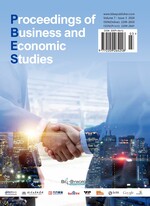Abstract
This paper analyzes 1,662 travelogues about the Wulong tourism destination from the Mafengwo platform using literature research and network text analysis. The goal is to identify the driving factors affecting Wulong’s tourism service experience and suggest improvements. By extracting high-frequency words and analyzing emotions from the travelogues, tourists’ conceptions and perceptions were identified and the factors affecting the tourism service experience in Wulong were summarized into six categories: tourism resource attractions, tourism transportation, tourism facilities and digital services, cultural charms, special cuisines, and environmental ambiance. Tourists’ emotional perceptions of Wulong are primarily positive, with negative perceptions mainly related to unsatisfactory tourism facilities and digital services in the Wulong scenic area. This study helps the Wulong tourist destination understand the issues and deficiencies in tourists’ service experiences, providing significant guidance for improving service quality and offering data support for service marketing and optimization.
References
Meyer C, Schwager A, 2007, Understanding Customer Experience. Harvard Business Review, 85(2): 116.
Vasconcelos AMD, Barichello R, Lezana A, et al., 2015, Conceptualisation of the Service Experience by Means of a Literature Review. Benchmarking: An International Journal, 22(7): 1301–1314. https://doi.org/10.1108/BIJ-08-2013-0078
Sandstrom S, Edvardsson B, Kristensson P, et al., 2008, Value in Use Through Service Experience. Manage Service Quality, 18(2): 112–126. https://doi.org/10.1108/09604520810859184
Litvin S, Hoffman L, 2012, Responses to Consumer-Generated Media in the Hospitality Marketplace: An Empirical Study. Journal of Vacation Marketing, 8(2): 135–145. https://doi.org/10.1177/13567667124434
Law R, Li G, Fong DKC, et al., 2019, Tourism Demand Forecasting: A Deep Learning Approach. Annals of Tourism Research, 75: 410–423. https://doi.org/10.1016/j.annals.2019.01.014
Fu C, 2020, On the Internal Logic of the Integration of Culture and Tourism. Journal of Wuhan University (Philosophy and Social Science Edition), 73(2): 89–100.
Wu C, Feng A, 2018, Research on Perception and Experience of Dalian Tourism Cuisine. Resource Development and Market, 34(12): 1771–1776.
Bitner MJ, 1992, Servicescapes: The Impact of Physical Surroundings on Customers and Employees. Journal of Marketing, 56(2): 57–71. https://doi.org/10.2307/1252042
Ezeh C, Harris LC, 2007, Servicescape Research: A Review and a Research Agenda. The Marketing Review, 7(1): 59–78.
Liu Y, Jang SS, 2009, The Effects of Dining Atmospherics: An Extended Mehrabian-Russell Model. International Journal of Hospitality Management, 28(4): 494–503. https://doi.org/10.1016/j.ijhm.2009.01.002
Xiang Z, Schwartz Z, Gerdes JH, et al., 2015, What Can Big Data and Text Analytics Tell Us About Hotel Guest Experience and Satisfaction? International Journal of Hospitality Management, 44: 120–130. https://doi.org/10.1016/j.ijhm.2014.10.013
